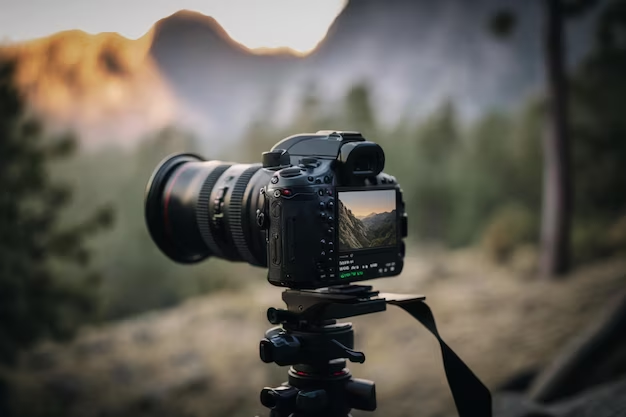
Source: Ghanaija
In the heart of Accra, Ghana, a young man named Kofi Agyemang stood in awe as he examined his grandfather’s old camera. The Leica III, with its elegant brass body and manual controls, had been a symbol of a bygone era. Kofi’s grandfather, Kwame Agyemang, was a renowned photographer who had captured countless moments on film. Kofi was fascinated by the way this simple device had evolved into the sophisticated digital cameras of today. This curiosity sparked his journey into the history of photography, tracing its evolution from film to digital.
The Dawn of Photography
The story of photography begins in the early 19th century with the invention of the daguerreotype by Louis Daguerre, a French artist. This method involved a copper plate coated with silver iodide, which was then exposed to light and developed using mercury vapor. The result was a unique, detailed image that was both a marvel and a challenge to produce.
In the vibrant city of Lagos, Nigeria, Amara Nwankwo, a historian and curator at the National Museum, was showcasing a collection of daguerreotypes from early African photographers. Amara’s exhibit highlighted the role of early African photographers in documenting the continent’s diverse cultures and landscapes. These images, though rudimentary by today’s standards, laid the foundation for what would become a global art form.
The Film Era
By the late 19th century, the invention of flexible film by George Eastman revolutionized photography. Eastman’s Kodak camera made it possible for amateurs to take photographs and have them developed without needing a darkroom. This innovation democratized photography, allowing people from all walks of life to capture their moments.
In Nairobi, Kenya, Amina Hassan, a talented photographer and educator, was teaching a workshop on the history of film photography at the Kenya National Archives. Her students, including aspiring photographers from various regions, marveled at the stories behind iconic images captured on film. Amina explained how film photography had enabled people to document personal and historical events with a level of permanence and detail previously unattainable.
The 20th century saw further advancements in film technology with the introduction of color film and improved camera designs. In Johannesburg, South Africa, Thabo Mokoena, a professional photographer, was restoring old family albums filled with vibrant, colorful images from the 1960s. Each photograph told a story of family gatherings, historical events, and cultural celebrations, preserving the past for future generations.
The Digital Revolution
As the 20th century drew to a close, digital technology began to transform the field of photography. The introduction of the digital camera marked a significant shift from film-based photography. Digital cameras, which used electronic sensors instead of film, allowed photographers to capture, view, and delete images instantly.
In Dakar, Senegal, Fatou Ndiaye, an emerging digital artist, was experimenting with new techniques using her digital camera. Fatou’s work involved blending traditional African art forms with modern digital technology, creating stunning visual narratives that resonated with both local and international audiences. Her innovative approach showcased the versatility of digital photography and its potential for creative expression.
The Impact on Society
The transition from film to digital photography had profound implications for society. The ease of digital photography made it possible for everyone to document their lives and share their experiences with a global audience. Social media platforms like Instagram and Facebook became virtual galleries where people from all corners of the world could showcase their photographs and connect with others.
In Addis Ababa, Ethiopia, Selam Tesfaye, a social media influencer and photographer, used her digital camera to capture the everyday life of her community. Her vibrant images of Ethiopian festivals, street scenes, and traditional ceremonies garnered widespread attention online. Selam’s work highlighted the power of digital photography to bridge cultural gaps and foster cross-cultural understanding.
The Future of Photography
As technology continues to advance, the future of photography holds exciting possibilities. Innovations in artificial intelligence, augmented reality, and virtual reality are pushing the boundaries of what can be captured and experienced through photography. These technologies offer new ways to interact with images and explore visual narratives.
In Kigali, Rwanda, Jean-Baptiste Uwimana, a tech entrepreneur, was developing an app that combined virtual reality with photography. His app allowed users to immerse themselves in historical events and cultural experiences through interactive, 360-degree photographs. Jean-Baptiste’s project aimed to make photography a more engaging and educational medium, particularly for young people interested in exploring their heritage.
A Global Journey
Kofi Agyemang’s exploration of photography’s evolution took him from the dusty archives of his grandfather’s studio in Accra to the vibrant exhibits in Lagos and the innovative workshops in Nairobi. He learned about the pioneers of photography, the impact of film, and the transformative power of digital technology.
Through his journey, Kofi came to appreciate the rich tapestry of photography’s history and its role in shaping our understanding of the world. He realized that photography was not just about capturing images but about preserving stories, cultures, and moments in time.
As Kofi prepared to share his newfound knowledge with his own community in Accra, he was inspired to continue his grandfather’s legacy by embracing both the traditional and modern aspects of photography. His goal was to bridge the gap between past and present, using the lessons of history to inform and inspire future generations of photographers.
In this way, the evolution of photography—from the early daguerreotypes to the latest digital innovations—reflects a broader narrative of human creativity and technological progress. It is a story of how we capture and interpret our world, from the days of film to the digital age and beyond.






